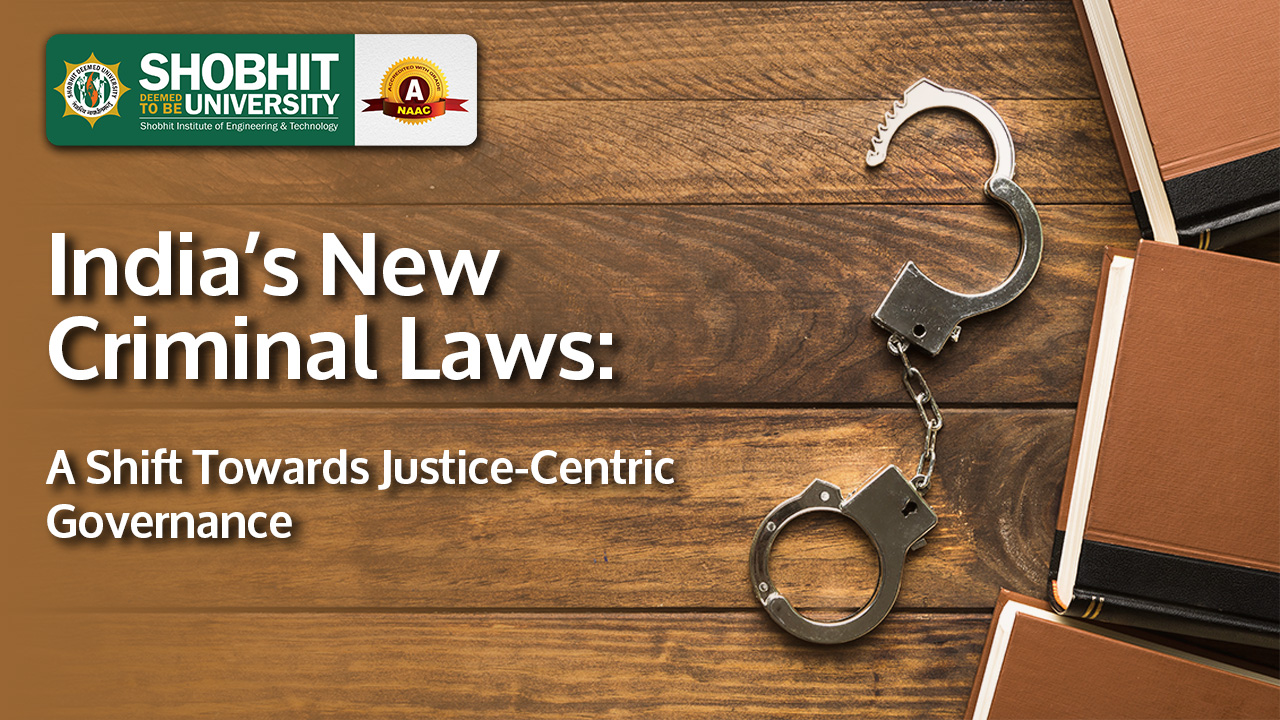
India’s New Criminal Laws: A Shift Towards Justice-Centric Governance
Introduction: Moving Beyond Colonial-Era Legislation
India’s criminal justice framework, historically based on British colonial statutes, has been fundamentally transformed. The Indian Penal Code (IPC), Criminal Procedure Code (CrPC), and Indian Evidence Act have been replaced by three new enactments: the Bharatiya Nyaya Sanhita (BNS), Bharatiya Nagarik Suraksha Sanhita (BNSS), and Bharatiya Sakshya Adhiniyam (BSA). Promulgated between 2023 and 2024 and effective from July 2024, these reforms are designed to modernize legal processes, emphasize victim rights, and incorporate technological advancements into the justice delivery system.
Why Were the Reforms Needed?
Although comprehensive, the colonial-era laws were often seen as procedural burdens that
slowed down justice and prioritized state control over fairness. Key issues included:
Lengthy investigations and trials causing delays.
Outdated crime definitions that did not cover modern offenses such as cybercrime and organized
criminal activities.
Limited roles for victims, leading to dissatisfaction with the system.
Insufficient adoption of technology, impeding efficient evidence management and courtroom
procedures.
The updated laws aim to transform the system from a punishment-focused model to a rights-
based, victim-oriented approach.
Main Features of the New Criminal Laws
1. Bharatiya Nyaya Sanhita (BNS): Revamping Criminal Offenses
The BNS maintains much of the IPC’s framework but includes important revisions:
Explicit definitions for new crimes such as mob lynching, hate crimes, and terrorism.
Reform of the sedition law, narrowing its scope to acts that threaten India’s sovereignty.
Introduction of community service as an alternative penalty for minor offenses, alleviating prison overcrowding.
2. Bharatiya Nagarik Suraksha Sanhita (BNSS): Accelerating Justice Delivery
The BNSS reforms criminal procedures to enhance efficiency:
Imposes a 90-day investigation limit for serious offenses.
Encourages digital procedures including electronic summons and trials conducted via video conferencing.
Strengthens forensic science utilization to secure more reliable evidence.
3. Bharatiya Sakshya Adhiniyam (BSA): Enhancing Evidence Standards
The BSA updates the rules governing evidence by:
Treating electronic records as primary evidence.
Enforcing strict protocols to maintain evidence integrity.
Balancing the rights of the accused with the need to ensure swift judicial processes.
Effects on Citizens and the Justice System
Expected Benefits
Quicker trials due to defined procedural deadlines.
Increased victim involvement promoting fairer outcomes.
Greater accountability for law enforcement through mandatory forensic review.
Adoption of technology to minimize errors and delays.
Challenges to Overcome
Training law enforcement personnel on new procedures.
Upgrading infrastructure for handling digital evidence effectively.
Conducting public awareness initiatives to foster cooperation.
New Career Prospects Within the Legal Domain
These reforms open new opportunities for legal professionals in areas such as:
1. Criminal Law Practice
Lawyers specializing in litigation under the BNS and BNSS.
Advocates managing appeals within the revised legal framework.
2. Forensic and Digital Legal Expertise
Consultants providing guidance on evidence collection.
Specialists in cyber law focusing on digital evidence.
3. Policy Development and Legal Education
Researchers studying the impact of the reforms.
Educators updating curricula to reflect the new criminal laws.
Skills in High Demand
Proficiency in laws related to electronic and digital evidence. Expertise in forensic methods. Understanding of victim-centric justice principles.
Conclusion: A Transformative Step for Indian Justice
India’s revamped criminal laws mark a significant departure from the rigidity of colonial-era statutes toward a system centered on rights and efficiency. While the path ahead involves challenges in implementation, these reforms have the potential to restore public confidence, speed up justice delivery, and align India’s legal system with international best practices. For legal professionals, this transition presents promising avenues at the intersection of law, technology, and policy. Ultimately, the success of these laws will depend on their effective application and ongoing judicial dedication.
